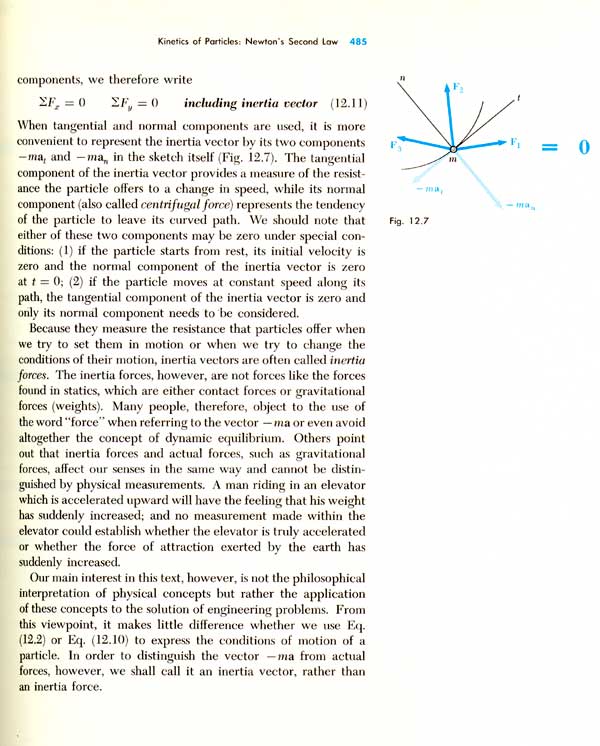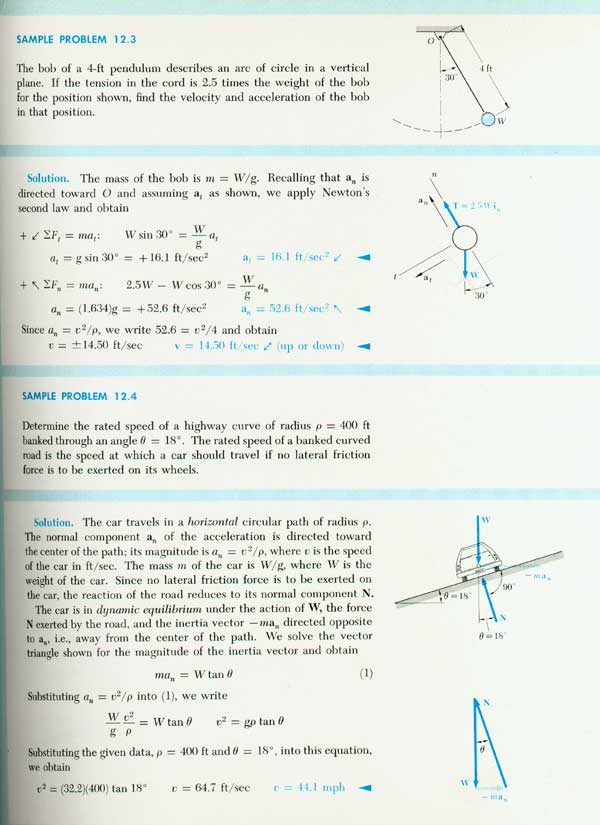
Here's a bit of a background from a dynamics text. The text is "Vector Mechanics for Engineers: Dynamics" by Ferdinand P. Beer and E. Russell Johnston, Jr. published by McGraw Hill in 1972. The book was one I used for my dynamics class, a class that was required for a degree in mechanical engineering.
It might shed some light on the discussion. I give a close analogy at the bottom of this long page.


Here are some sample problems that show the application of the above approach:

The following illustration shows a problem (12.40) that I found closest to the one discussed in the newsgroup. Substitute a vector force leaning upward onto the sphere instead of a cord in tension. The vectors would be the same direction and magnitude.
The answer given in the back of the books gives 13.05 lbs. and 9.32 ft/sec. as answers for part a & b respectively, showing that whatever supports this sphere in steady-state motion ( a cord in tension or a leg in compression) experiences more than the weight of the original sphere. (The sphere "feels" the increase too - see the airplane pilot analogy at the bottom of this page.)
The sphere weighs 10 lbs. and the resulting force was 13.05 lbs, so the sphere is experiencing 1.305 g's.

Finally, here's another close analogy.
I used to fly light aircraft. One skill required for a pilot's license was to master steeply banked turns. In a 60 degree banked turn, you experience 2 g's, that is, you weigh twice as much.
Believe me, that's no imaginary force when all your skin sags, your appendages are pulled down making the airplane much harder to control, and you wonder if the floor of the aircraft is strong enough to keep you in it!